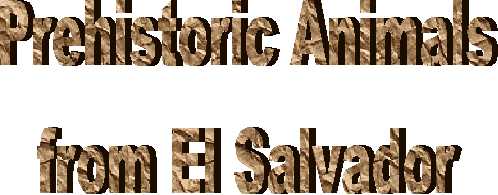

On September 7th, 1979 El Salvador issued a set of 6 stamps dedicated to prehistoric mammals that lived in our territory during Cenozoic
Era. The issue's title is "Prehistoric Fauna from El Salvador".
El Salvador does not have dinosaur fossils because Central America appeared when dinosaurs were died out. During Mesozoic era the most
part of Central America was marine bottom and was located where now is Mexico; for this reason the oldest life evidences are corals, algas,
crabs, etc
The first fossil's excavation in El Salvador were made by cientists David J. Guzman and Jorge Larde. In their papers, they make references to
some sites where they found fossils. In 1942, a paleontologist studied Salvadorean prehistoric mammals, his name was Dr. R. A. Stirton. Dr.
Stirton discovered seven extint mammals that lived here. Now, the Natural History Museum of El Salvador had done an effort in order to
catalogue our collection of prehistoric fauna and flora.
During 70's, a paleontologist named Steve Perrigo arrived under initiative of Servicio de Parques Nacionales and Natural History Museum.
He did excavation in many places and confirm the variaty of Pleistocene Central American fauna (last period of Cenozoic era). In that period
the North and South of this continent were connected by Central America and intercontinental migration of animals was possible.
Among prehistoric mammals found in El Salvador we have:
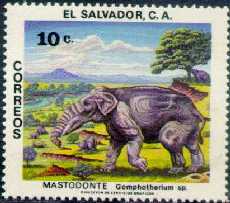 |
Name: Proboscidean Cientific name: Gomphotherium sp Period: Miocene, Pliocene Fossil location: eastern country zone . Native of Europe, this animals lived in Asia and America. El Salvador is the south site where they lived in America. |
Name: Proboscidean Cientific
name: Mammuthus columbi Period:
Pleistocene Fossil
location: eastern country zone. Native
from North America, mamuths covered Central American territory. They were 3.4 m tall and live in savanah. |
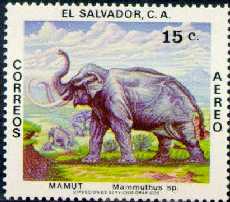 |
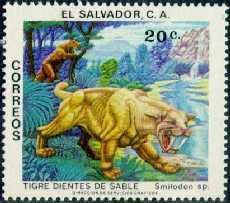 |
Name: Sabertooth Cat Cientific name: Smilodon sp. Period: Pliocene, Pleistocene Fossil location: aestern country zone They were native of America and was similar size to African lion. Their two tooths ware used to hunt giant anteaters and prosboscideans. |
Name: Anteater, Giant Cientific
name: Eremotherium carolinensis Period:
Pliocene, Pleistocene Fossil
location: many country zones Anteater
are native of South America and they cover all Latin American continent during Pleistocene. The South American species are known as Sloth (Megatherium americanum). El Salvador has a 7.6 m. fossil that is the tallest of Central American area. |
 |
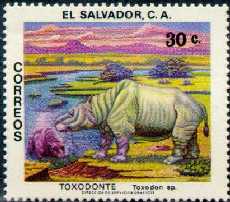 |
Name: Ungulate Cientific name: Toxodon platensis Period: Pliocene, Pleistocene Fossil location: Central and eastern country zones They were native from South America and traveled to Guatemala. They were 1.3 m. tall and were similar to hipoppotamus. |
Name: Dog Hyenalike Cientific
name: Borophagus cynoides Period:
Pliocene Fossil
location: eastern country zone They
were native from North America. Honduras and El Salvador are the south places where fossils have been found. |
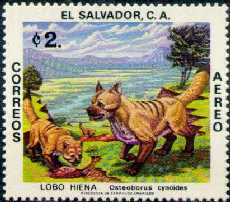 |